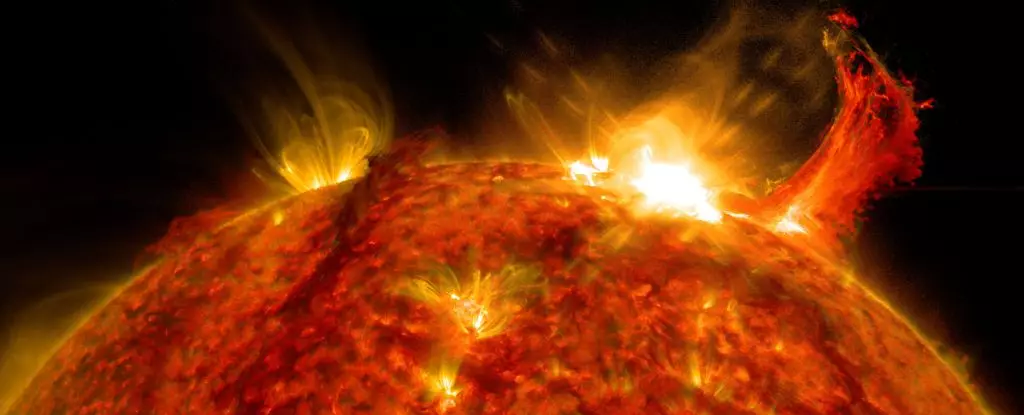Approximately 14,300 years ago, Earth underwent an extraordinary transformation, spurred by an event of cosmic magnitude. Fossils and ice cores preserved in ancient trees manifest irrefutable evidence of a colossal solar event that took place around 12,350 BCE. Through rigorous research employing a sophisticated climate-chemistry model known as SOCOL:14C-Ex, scientists have unearthed findings that underscore the enormity of this ancient solar storm. Notably, it has been determined that this geomagnetic storm was a staggering 500 times more powerful than the largest events observed in the modern era, specifically referencing the 2005 particle storm. Such revelations not only enlighten our cosmic history but also pose pressing questions about the Sun’s unpredictable nature.
Understanding Geomagnetic Storms
At the crux of this phenomenon are geomagnetic storms, which are typically the result of coronal mass ejections—massive ejections of solar plasma intertwined with magnetic fields. When these charged particles collide with Earth’s atmosphere, the outcome can be spectacular yet perilous. The vivid displays of the auroras are perhaps the most captivating visual fallout of geomagnetic storms, but the implications extend far beyond mere aesthetics. Historical accounts, such as the infamous Carrington Event of 1859, illustrate the capacity for such storms to disrupt technological systems and even incite calamities. The disintegration of telegraph systems during the Carrington Event serves as a stark reminder of the vulnerabilities in our technological infrastructure. The events that plagued power grids in 1989 further illustrate our society’s fragility in the face of solar irregularities.
The Enigmatic Role of Carbon-14
An interesting aspect of geomagnetic storms is their effect on carbon-14 levels in our environment. The moment cosmic particles interact with Earth’s atmosphere, they trigger an increase in this radioactive isotope. Carbon-14, which incorporates itself into all living organisms, serves as a crucial chronological marker for scientists. With its known decay rate, researchers can cross-reference carbon-14 spikes found in tree rings and other organic materials to pinpoint the dates of historical geomagnetic events. This methodology is a game-changer in understanding solar activity far beyond the scope of recorded history. Importantly, the recent studies assert that the spike in carbon-14 during the ancient storm offers not just a timestamp but a glimpse into the Earth’s tumultuous relationship with solar events.
A Glimpse Into a Prehistoric Catastrophe
The newly identified geomagnetic event of 12,350 BCE stands in stark contrast to other notable solar occurrences, such as those approximated at 994 CE, 660 BCE, 5259 BCE, and 7176 BCE, with the last previously documented extreme storm occurring in 774 CE. What distinguishes the event of 12,350 BCE is its occurrence outside the stable Holocene epoch—a period characterized by relatively moderate climate conditions. To fully understand this remarkable outlier, researchers had to extend their analytical capabilities beyond contemporary climatic norms, hence the necessity for the SOCOL:14C-Ex model. By validating this model against the reliably documented event of 774 CE, scientists are equipped to explore the unique attributes of the most potent solar event known to date.
Defining a New Paradigm
The implications of the findings surrounding this ancient geomagnetic storm are profound and multifaceted. The 12,350 BCE event, according to space physicist Kseniia Golubenko, essentially sets a new benchmark for assessing potential solar threats to Earth. This research not only disrupts our understanding of solar activity during specific periods but also prompts an urgent re-evaluation of how modern technology might perform under extraordinary solar stresses. It raises critical questions about the Sun’s behavior, especially in contexts where human reliance on technology is paramount.
As we deepen our understanding of the Earth-Sun relationship, we find ourselves standing on the precipice of a complex new narrative—one that beckons for continued inquiry, preparation, and perhaps a shift in how we view our celestial neighbor. The legacy of this ancient event is a powerful reminder of the Sun’s unpredictable potential and the persistence of its shadow over human history.

